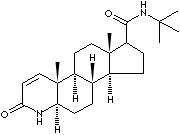Corticosteroid is a
synthetic or naturally occurring 21-carbon steroid
structure substances with four fused rings and vary functional branches attached to the ring
system. Cholesterol and steroid hormones have this carbon skeleton. The term steroid
refers to these three groups that contain a hydrogenated
cyclopentano perhydro phenanthrene ring system. In restricted context for medical
usage by non-endocrinologists, it refers to corticosteroids. Natural corticosteroids are elaborated by the adrenal
cortex in response to physiological carbohydrate metabolism. According to their
predominant biologic activity, they are divided into two major groups:
glucocorticoid and mineralocorticoid. Glucocorticoid's chief function is to
regulate carbohydrate, lipid, and protein metabolism and inhibit the release of
ACTH (adrenocorticotropic hormone). Glucocorticoids also affect muscle tone and
the microcirculation, participate in the maintenance of arterial blood pressure,
increase gastric secretion, alter connective tissue response to injury, impede
cartilage production, inhibit inflammatory, allergic, and immunologic responses,
invoke shrinkage of lymphatic tissue, reduce the number of circulating
lymphocytes, and affect the functions of the central nervous system. In humans,
the most important ones are cortisol, cortisone, and corticosterone.
Mineralocorticoids, uniuqely aldosterone in human, regulate the balance of water
and promote retention of sodium, loss of potassium. Aldosterone plays a role also
in promoting tissue repair. Spironolactone is the aldosterone antagonist called
potassium-sparing diuretic used in the treatment of hypertension.
Corticosteroids are used in clinically for hormonal replacement therapy, for
suppression of ACTH, as antineoplastic, antiallergic, and anti-inflammatory
agents, and to suppress immune responses.
- Glucocorticoid
Receptor Agonists
- Dexamethasone
- Triamcinolone
- Hydrocortisone
- Prednisone
- Glucocorticoid
Receptor Antagonists
- Mineralocorticoid
Receptor Agonists
- Mineralocorticoid
Receptor Antagonists
- Spironolactone
- Eplerenone
|
